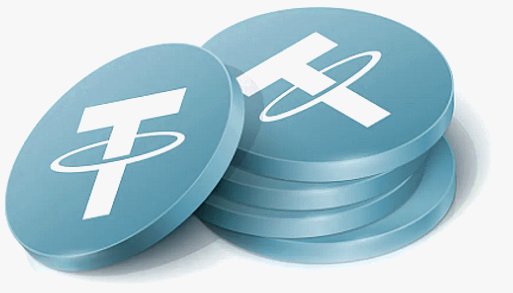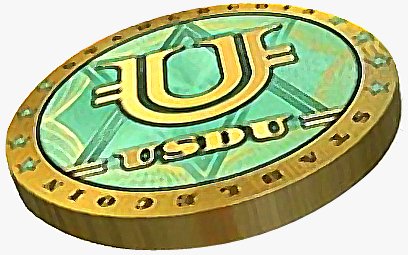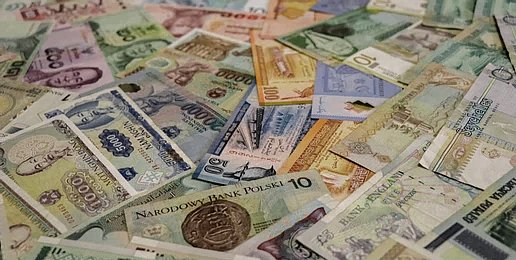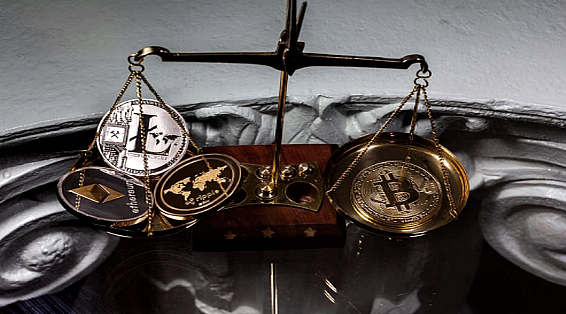Accredited InvestorsAltcoinAnatoli UnitskyAnti-Money Laundering (AML) In CryptoAPIArbitrageArtCoin TokenArticle DirectoryASICAuction Terminology GlossaryBasics of Stock Market InvestingBear MarketBest Crypto Payment Provider In the WorldBitcoinBlockchainBlockchain ConfirmationBlockchain Consensus MechanismBlockchain ForkBlockchain GlossaryBored Ape Yacht ClubBuild a Business That OutperformsBull MarketBuying SkyWay SharesByzantine Fault Tolerance (BFT) ExplainedCasascius CoinCentral Bank Digital Currency (CBDC)Centralized Crypto ExchangeCoinCoinsetCold WalletCollateralCommodity Futures Trading Commission (CFTC)Cross-Chain TechnologyCRUCrypto ExchangeCrypto GlossaryCrypto JokesCrypto Terms to KnowCrypto TickerCryptocurrencyCryptographyCryptojackingCryptounit BlockchainCryptounit GlossaryCryptounit ProgramdApp (Decentralized Application)Dead CoinDecentralized Exchange (DEX)Decentralized Finance (DeFi)Difference Between Bitcoin and EthereumDifferent Ways of Investing MoneyDigital CurrencyDistributed LedgerDo Your Own Research (DYOR)Dollar Cost Averaging (DCA)Dow Jones Industrial Average (DJIA)EncryptionERC-20ERC-721EthereumEvoScentFear Of Missing Out (FOMO)Fear, Uncertainty and Doubt (FUD)Fiat MoneyFNT Fintech CompanyGenesis BlockGlobal Unit PayGlossary of Banking TermsGlossary of Business TermsGlossary of Financial TermsHalvingHODLHot WalletHow Do I Start InvestingHow Rich is Satoshi Nakamoto?How to Create a BlockchainHow to Find Private InvestorsHow to Get Into FintechHow to Program Smart ContractsI Am Thrilled to Be a Part of This Global ProjectInitial Coin Offering (ICO)Initial Public Offering (IPO)Initial Token Offering (ITO)Innovation Basalt TechnologyInnovative Transportation TechnologiesInternational Bank Account Number (IBAN)Investing in Gold Mining StocksInvesting in Gold MiningJagerJoy of Missing Out (JOMO)Know Your Customer (KYC)LedgerLiquidity in CryptocurrencyMaker and Taker Fees in Crypto TradingMarket Capitalization (Market Cap)Meme CoinMetal Credit CardMetaMaskMillenials Now Have Access to Generational WealthMy Best Investment EverNew Digital EvolutionNFT GlossaryOff-Chain TransactionsOn-Chain TransactionsOpen Edition NFTPeer-to-Peer (P2P)Personal Loan GlossaryProbably the Best STO on the MarketProof of Stake (PoS)Real Estate Glossary of TermsReal Estate Investing GlossaryRebase TokenSecurities and Exchange Commission (SEC)Security Token ExchangesSecurity Token Offering (STO)Soulbound Decentralized Identities for Security TokensSoulbound ID Launch by Stobox Proves a SuccessSoulbound TokensStoboxStock Market GlossaryTestimonialsTether Platform and Token (USDT)UnitEx ExchangeUnitsky String TechnologiesUNTBUSDUValidatorWe Started Investing When We Were 25What are Blue Chip NFT?What are Blue Chip Stocks?What are Crypto Assets?What are Crypto Smart Contracts?What are CryptoPunks NFT?What are Digital Assets?What are Digital Collectibles?What are Gas Fees?What are Gas Wars?What are Hashmasks?What are Non Fungible Tokens?What are Non-Sufficient Funds (NSF)?What are Soulbound Tokens (SBT)?What are Stablecoins in Crypto?What are Transactions Per Second (TPS)?What are Utility NFTs?What are Utility Tokens?What Does Burning Crypto Mean?What Does Diamond Hands Mean?What Does Paper Hands Mean?What Does To The Moon Mean?What Does WAGMI Mean?What Happened to Satoshi Nakamoto?What is a 51% Attack?What is a Baby Boomer?What is a Backlink?What is a Banner?What is a Barcode?What is a Bid-Ask Spread in Crypto?What is a Block in Blockchain?What is a Block Reward?What is a Blockchain Address?What is a Blockchain Node?What is a Blockchain Oracle?What is a Blog?What is a Bond?What is a Bot?What is a Broker?What is a Business Accelerator?What is a Cash Cow?What is a Commercial Bank?What is a Commodity?What is a Con?What is a Credit?What is a Credit Limit?What is a Credit Rating?What is a Crypto Airdrop?What is a Crypto Bridge?What is a Crypto Scam?What is a Crypto Token?What is a Crypto Wallet?What is a Crypto Whale?What is a Crypto Winter?What is a Cryptocurrency Public Ledger?What is a Cryptocurrency Roadmap?What is a DAO?What is a Dark Pool?What is a Day Trader?What is a Dead Cat Bounce?What is a Default?What is a Derivative?What is a Digital Credit Card?What is a Fiscal Quarter?What is a Fungible Token?What is a Governance Token?What is a Grace Period?What is a Hard Fork?What is a Hot Wallet?What is a Hybrid Blockchain?What is a Hybrid PoW/PoS?What is a Joint Account?What is a Market Cap?What is a Merkle Tree in Blockchain?What is a Mining Farm?What is a Nonce? What is a PFP NFT?What is a POS System?What is a Prepaid Card?What is a Private Blockchain?What is a Private Key?What is a Public Blockchain?What is a Public Key?What is a Reserve Currency?What is a Ring Signature?What is a Routing Number?What is a Rug Pull in Crypto?What is a Safe Deposit Box?What is a Satoshi?What is a Security Token?What is a Seed Phrase?What is a Shitcoin?What is a Sidechain?What is a Soft Fork?What is a Spot Market?What is a State Bank?What is a SWIFT Code?What is a Tax Identification Number (TIN)?What is a Time Deposit?What is a Transaction Account?What is a Variable Interest Rate?What is a Virtual Assistant (VA)?What is a Virtual Card?What is a Virtual Currency?What is a Visa Card?What is a Whitelist in Crypto?What is a Whitepaper?What is Accounts Payable (AP)?What is AMA in Crypto?What is Amortization?What is an Accrual?What is an ACH Transfer?What is an Actuary?What is an Addendum?What is an Algorithm?What is an Angel Investor?What is an Annuity?What is an Asset?What is an ATM?What is an Atomic Swap?What is an Audit?What is an Avatar?What is an EIN?What is an Embargo?What is an Entrepreneur?What is an IDO (Initial Dex Offering)?What is an Interest Rate?What is an Internet cookie?What is an Investment Bank?What is an NFT Drop?What is an NFT Floor Price?What is an Ommer Block?What is an Orphan Block?What is an Outstanding Check?What is an Overdraft?What is Artificial Intelligence (AI)?What is B2B (Business-to-Business)?What is B2G (Business-to-Government)?What is Bartering?What is Bitcoin Dominance?What is Bitcoin Pizza Day?What is Blockchain Immutability?What is Blockchain Used For?What is BRICS?What is Business-to-Consumer (B2C)?What is C2C (Customer to Customer)?What is Capitalism?What is Catfishing?What is CFD Trading?What is Check Kiting?What is Cloud Mining?What is Communism?What is Content Marketing?What is Decentralization in Blockchain?What is DeFi in Crypto?What is Delisting?What is Depreciation?What is Digital Marketing?What is Diversification?What is Double Spending?What is Dumb Money?What is Dumping?What is Earnings Per Share (EPS)?What is Economics?What is Email Marketing?What is Equity?What is Etherscan?What is Fintech?What is Foreign currency?What is Forex?What is Fundamental Analysis (FA)?What is GameFi?What is Generative Art NFT?What is Gwei?What is Hard Currency?What is Hash Rate?What is Hashing in Blockchain?What is Inflation?What is Initial Game Offering (IGO)?What is Interest?What is Interest Income?What is Mainnet?What is Mastercard?What is Metaverse in Crypto?What is Mining in Cryptocurrency?What is Minting NFT?What is Mobile Banking?What is Money Laundering?What is NFT Alpha?What is NFT Metadata?What is NFT Rarity?What is NGMI Meaning?What is Nominal Interest Rate?What is Online Banking?What is Open-End Credit?What is OpenSea NFT Marketplace?What is Personal Identification Number (PIN)?What is Play-to-Earn?What is Polygon?What is Proof of Authority (PoA)?What is Proof of Work (PoW)?What is Public Key Cryptography?What is Pump and Dump?What is Quantum Computing?What is Refinancing?What is Retail Banking?What is Ripple?What is Sharding?What is Slippage in Crypto?What is Smart Money?What is Solvency?What is Soulbound ID?What is SSL?What is Staking in Cryptocurrency?What is Technical Analysis (TA)?What is Testnet?What is the Ask Price?What is the Better Business Bureau (BBB)?What is the Bid Price?What is the Dark Web?What is the InterPlanetary File System (IPFS)?What is the Gold Standard?What is the Lightning Network?What is the Prime Rate?What is the Sandbox?What is the Secondary Market?What is the World Bank?What is Tier 1 Capital?What is Tokenomics?What is TRC-20?What is Universal Banking?What is Unspent Transaction Output (UTXO)?What is Usury?What is Volatility in Crypto?What is Wash Trading?What is Web3?What is Whisper?What is XRP?What is Zero-Knowledge Proof (ZKP)?Who is Beeple?Who is Satoshi Nakamoto?Who is Vitalik Buterin?Why Tokenization is a Safe HavenWhy You Should Try Your Hand at Trading
Tether Platform and Token (USDT)
- Home
- Crypto Glossary
- Tether Platform and Token (USDT)
Tether, launched in 2014, is a blockchain platform that aims to digitize fiat currencies. It aims to revolutionize the traditional financial system with its modern approach to money.

Tether allows customers to make transactions with traditional currencies on the blockchain, eliminating the volatility and complexity often associated with digital currencies. As the first blockchain platform to bring traditional currencies to the digital world, Tether has made cross-border transactions on the blockchain accessible to everyone.
The platform is built on the Omni Layer, a layer on top of the Bitcoin blockchain that enables the creation of digital assets and smart contracts.
Tether tokens are issued and redeemed by Tether Limited, the company behind the Tether platform. Tether Limited holds US dollars in reserve, which it claims are used to back all Tether tokens in circulation.
What are Tether Tokens (USDT)?
Tether (USDT) was launched by the Tether company in 2014 as a stablecoin pegged to the US dollar.
Tether tokens are digital assets that can be easily transferred on the blockchain like other cryptocurrencies, but their value is linked 1:1 to real-world currencies. These tokens are known as stablecoins because their value is pegged to a fiat currency, providing a low-volatility option for traders, merchants, and funds when exiting market positions. Tether tokens are backed 1:1 with their corresponding fiat currency (e.g. 1 USDT = 1 USD) and fully supported by Tether's reserves.
Tether token (USDT) was created to provide a stable alternative to traditional cryptocurrencies, which are known for their high volatility. The idea behind Tether is that it can serve as a medium of exchange for other cryptocurrencies, allowing traders to avoid the fluctuations of the cryptocurrency market and instead trade with a stablecoin.
The use of Tether tokens has grown significantly since its creation, and it is now one of the most widely used stablecoins in the cryptocurrency market. Tether is used as a medium of exchange on several popular cryptocurrency exchanges, including Bitfinex and Binance. This has made Tether an important part of the cryptocurrency ecosystem, providing stability and reliability to investors and traders.
Tether Token Price
The fundamental aim of a stablecoin such as USDT is to consistently maintain a value of $1. To achieve this stability, every USDT is supported by reserves kept in the Tether Treasury. Despite this, USDT's value has seen some fluctuations throughout the years.
In July 2018, USDT reached its highest value of $1.32, while in March 2015 it hit its lowest point at $0.57. These changes in value are largely due to changes in demand for the token. When the cryptocurrency market is booming, demand for stablecoins such as Tether typically decreases.
Additionally, Tether's history of legal disputes has also impacted demand for the token. For example, when the New York Attorney General's office launched legal action against Tether, the value of USDT deviated from its dollar peg by 3%.
Despite these fluctuations, USDT's value has mostly remained close to $1, with minor deviations of $0.01 or $0.02 at times. However, these deviations are usually temporary.
The maximum supply for USDT is not predetermined as new coins are issued based on user demand and the reserves held by Tether.
Why is USDT Burned?
USDT can be burned to lower the quantity of tokens in circulation on a specific blockchain. This can occur when a customer exchanges their USDT for fiat currency. The redeemed tokens may then be kept by Tether's treasury, effectively removing them from circulation and not affecting the total market capitalization. This allows for future issuance only when new market demand arises.
Pros of USDT
Tether (USDT) is one of the most popular stablecoins in the crypto market. It is often considered as a reliable option for those looking for a stable value in the crypto world. USDT has a history of maintaining its peg to the US dollar, which makes it a preferred choice among investors.
In terms of liquidity, USDT is considered to be highly liquid as it typically has the largest trading volume among all stablecoins. This makes it an attractive option for those who are looking to buy or sell cryptocurrencies quickly. Moreover, the stability of USDT is also a major factor that contributes to its high liquidity.
Compared to other cryptocurrencies such as bitcoin and altcoins, USDT is less volatile, making it a safer investment option. Its value generally hovers around $1, which makes it a less risky option compared to other cryptocurrencies that tend to experience large price swings.
USDT is also widely accessible and is available on almost all exchanges and all major blockchain networks. This makes it an easily accessible option for investors looking to trade cryptocurrencies.
Cons of USDT
Tether, despite being a widely used stablecoin, has been plagued with a lack of transparency regarding its business practices. To date, the company has not implemented a clear and open strategy, leading to questions about whether its US dollar reserves match the supply of its tokens.
In addition to this, Tether has been at the center of various accusations and lawsuits, which have negatively impacted its reputation. These controversies and legal issues may cause users to question the security and stability of the currency.
The Controversial History of Tether
Tether and its parent company BitFinex have faced numerous controversies and legal actions in recent years. In November 2017, Tether reported the theft of $31 million USDT tokens, which prompted a hard fork.
At that time, the company was already under scrutiny for questions about its reserve adequacy. Later investigations revealed difficulties in accessing banking services.
In April 2019, the New York Attorney General obtained a court order against Tether and BitFinex for violating New York law, finding that BitFinex had used at least $700 million from Tether's reserves to cover frozen funds from its Panamanian banking partner Crypto Capital Corp. in a money laundering investigation.
Tether and BitFinex settled the case in February 2021, agreeing to pay a $18.5 million fine, cease trading with New York residents or entities, and provide information on its reserves to the New York Attorney General's office for two years.
In October 2021, the U.S. Commodity Futures Trading Commission fined Tether $41 million "over claims that Tether stablecoin was fully backed by U.S. dollars." However, the CFTC found that Tether held sufficient fiat reserves to back USDT tokens for only 27.6% of the days from 2016 to 2018. BitFinex also agreed to pay a $1.5 million fine as part of the settlement.
In May 2022, Tether's price briefly dropped to $0.96 due to the decline in value of another stablecoin, TerraUSD. The price quickly recovered to over $0.99, and Tether confirmed it would continue honoring redemption requests at a 1-to-1 ratio with the U.S. dollar. Tether has also expanded into other markets, including Mexico (MXNT), Europe (EURT), and China (CNHT).
Related Articles

What are Stablecoins in Crypto?
Stablecoins have become essential components in the crypto world, offering important functions for investors and speculators.

Fiat
Fiat money is a government-issued currency that is not backed by a tangible commodity like gold or silver, but rather by the government that issued it.

Exchange
Exchanges are classified into two types: centralized exchanges (CEX), such as UnitEx, and decentralized exchanges (DEX).

Liquidity
Liquidity is the ability to sell or acquire an asset without significantly changing the market price. The term also indicates the ease with which an asset can be converted into...
- Home
- Crypto Glossary
- Tether Platform and Token (USDT)